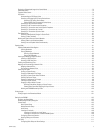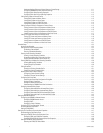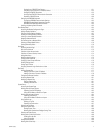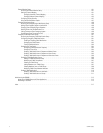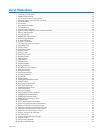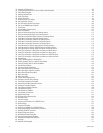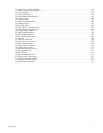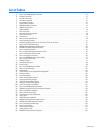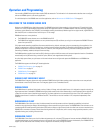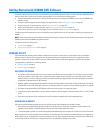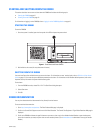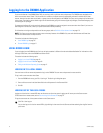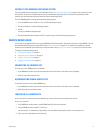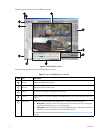C624M-C (5/06) 13
Operation and Programming
You are reading DX8000 Series digital video recorder (DVR) documentation. The information in this documentation describes how to configure
and use the DX8000 system in your security application.
For a brief description of the DX8000 server and client applications, refer to Welcome to the DX8000 Series DVR on page 13.
WELCOME TO THE DX8000 SERIES DVR
Welcome to the DX8000 Series digital video recorder. The DX8000 Series digital video recorder is a high-performance, PC-based digital video
recorder. It is an easy-to-operate digital video recorder (DVR) client application system. The DX8000 features multi-event recording, supporting
continuous, motion detection, alarm, ATM/POS, and scheduled recording simultaneously. Models range from an eight-channel, single 80 GB hard
disk drive (HDD) unit to a sixteen-channel unit with up to 1 TB of storage.
DX8000 software runs on two platforms:
• The DX8000 DVR server software runs on the DX8000 Series DVR.
• The DX8000 Client Application software runs on a personal computer (PC) and allows you to log in to and operate the DX8000 DVR server
system from your local PC.
Fully implemented networking capabilities allow remote administration, playback, and export using the accompanying client application. Live
viewing is supported on a variety of client platforms, including Internet browsers and pocket PC-compatible hand-held devices. Versatile high-
speed search operations include time and date, event list, thumbnail, and intelligent pixel searching. Extensive scheduling features allow
customizing of weekday, weekend, and special event recording.
The DX8000 provides a graphical user interface (GUI), allowing you quick and efficient access to all setup and operations functions. Scheduled or
manual backup can be performed using a number of optical, external, and mapped network drive options.
An online Help system allows you quick access to information about how to configure and operate the DX8000 server and DX8000 client
application.
The DX8000 also supports the following PC-based applications:
• DX8000 Client Emergency Agent on page 13
• DX8000 Viewer on page 13
• DX8000 Mobile Client on page 13
• DX8000 Web Client on page 13
DX8000 CLIENT EMERGENCY AGENT
The DX8000 Client Emergency Agent works with networked DX8000 Series digital video recorders to alert users when one or more particular
channels detect a motion and/or alarm event. The Emergency Agent runs on a networked client PC.
DX8000 VIEWER
The DX8000 Viewer is capable of playing back a variety of video, still image, and audio media formats. It is designed to recognize and verify the
digital watermark that is embedded in DX8000 Series digital video recorder native video. Watermarking is used to authenticate the originality of
a video file and to alert users of possible image tampering. The viewer application runs automatically each time a CD or DVD created by the
DX8000’s export feature is inserted into a Windows-based PC. The software can also be installed on a PC and opened independently when
necessary.
DX8000 MOBILE CLIENT
The DX8000 Mobile Client allow you to view live video remotely from multiple cameras and sites. Networking capabilities include local
connection using wire-bound or wireless LAN technologies or remote connection using the Internet. The DX8000 Mobile Client software runs on
a standard pocket PC-based Personal Digital Assistant (PDA) and can display a single channel of real-time video from any camera attached to any
DX8000 DVR on the network. Features include hierarchical organization of multiple sites, built-in security through password protection, and an
adjustable viewing area, including full-screen view.
DX8000 WEB CLIENT
The DX8000 Web Client allows you to view live video and operate pan, tilt, and zoom (PTZ) features of cameras attached to DX8000 DVRs. Using
a standard web browser, you can remotely monitor up to 16 cameras from up to five DX8000 DVR servers simultaneously. Each DX8000 DVR can
support up to 100 web clients either internally within an organization or externally through the Internet.



